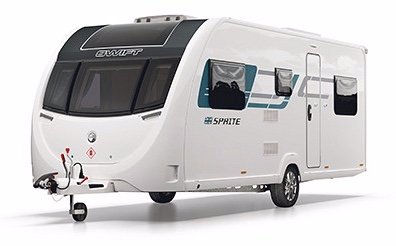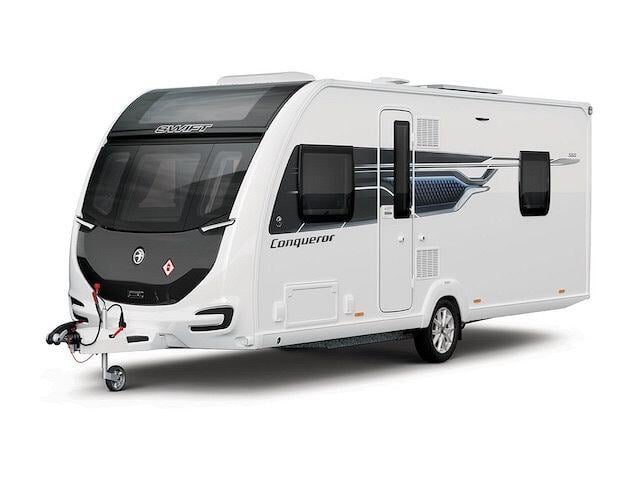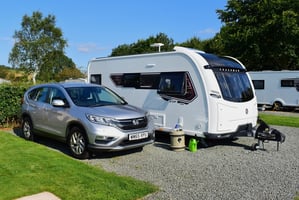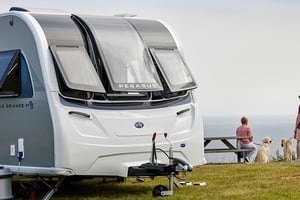The history of the Coachman caravan
The Swift caravan brand has become synonymous with British caravan holidays, offering style, innovation and comfort to generations of holidaymakers. Over the decades, Swift has grown from humble beginnings into one of the largest and most recognisable manufacturers of caravans in the UK. Here we explore the fascinating history of the Swift caravan, following its journey from the company’s founding in the sixties to the present day.
The birth of the Swift caravan
The story of Swift began in 1964, when Ken Smith, an entrepreneur in Hull, saw a growing demand for affordable, high-quality caravans. At the time, caravanning was becoming increasingly popular among British families, offering an affordable and flexible way to holiday at home and abroad. Spotting a gap in the market, Ken established Swift Caravans Ltd and began producing touring caravans from a small workshop in Hull.
Ken’s vision was simple: to create well-built, stylish caravans at competitive prices. The very first Swift caravan, a 10ft tourer - the ‘Ten’ - was produced in 1964, marking the start of the company’s long and successful journey. This early model set the tone for Swift’s future, combining practicality with comfort, and it was soon followed by larger, more advanced models including the Clubman and Valken.
Swift’s expansion
The 1970s were a decade of rapid growth for Swift. As the demand for caravan holidays continued to rise, Swift expanded its product range and production capabilities to meet the needs of an increasingly enthusiastic market. Also by this point, caravanning was no longer seen as just an affordable holiday option but had become a lifestyle choice for many British families.
Swift was quick to innovate, introducing new layouts, enhanced comfort features, and more spacious interiors to cater to the changing needs of their customers. The company also began to diversify its product line, offering different models for both seasoned caravanners and those just starting out. This approach helped Swift gain a reputation for producing caravans that appealed to a broad range of holidaymakers, from both couples to large families. In 1976 the Corniche range was introduced to widen the choice of models available.

The 1980s
By the 1980s, Swift had firmly established itself as a leading player in the UK’s caravan market. The company continued to innovate, introducing new materials and manufacturing techniques that improved the durability and performance of their caravans, for example the Cottingham range now featured the first caravan with a built-in aerofoil roof. This era also saw Swift focusing more on comfort and luxury, with many of their models featuring plush interiors, modern kitchen appliances and better insulation for year-round touring.
In this decade, the Challenger range was eventually introduced to replace the Cottingham range.
The 1990s
The 1990s marked a significant period in Swift’s history, as the company embarked on a series of mergers and acquisitions that would solidify its position as the UK’s largest manufacturer of leisure vehicles. In 1994, Swift acquired the Sprite and Eccles caravan brands, both of which had their own storied histories in the British caravan market. These acquisitions allowed Swift to expand its product range even further, catering to a wider audience and introducing new innovations under the different brand names.
By this point, Swift had also moved into motorhome production, recognising the growing trend for motorhome holidays. This move proved to be a success, and Swift began to develop a reputation for producing high-quality motorhomes alongside its caravans.

The 2000s
In the 2000s, Swift continued to push the boundaries of design and technology, setting new standards for the industry. The company invested heavily in research and development, leading to the creation of lighter, more aerodynamic caravans that were easier to tow and more fuel-efficient.
One of the biggest innovations of this era was the introduction of SMART Construction, Swift’s revolutionary timber-less construction method, which debuted in 2012. SMART Construction replaced traditional timber frames with polyurethane materials, making Swift caravans more robust, lighter, and resistant to water ingress. This innovation was a game-changer for the industry, raising the bar for durability and long-term reliability.
Swift’s dedication to quality control also became evident during this period, with the company investing in state-of-the-art manufacturing facilities and implementing rigorous testing procedures to ensure that every caravan met the highest standards of safety and performance.
![]()
The modern Swift caravan
In recent years, Swift has placed a strong emphasis on sustainability and eco-friendly production. As environmental concerns have become more pressing, Swift has introduced greener manufacturing processes, for example by including recycled materials, and by reducing waste in their production lines. Their caravans are also designed with energy efficiency in mind, with features such as LED lighting, better insulation, and solar panel options available.
Today, Swift offers a wide range of caravans and motorhomes, catering to every type of traveller, from weekend adventurers to full-time users.
Swift’s ability to adapt to changing customer needs, embrace technological advancements and remain committed to quality has allowed them to maintain their position as a market leader for over half a century. Their history is one of innovation and growth, and also dedication to providing the very best in caravanning experiences. From its humble beginnings in a small workshop in Hull to becoming one of the most recognised caravan brands in the UK and beyond, Swift has helped shape the caravan industry and continues to do so to this day.







